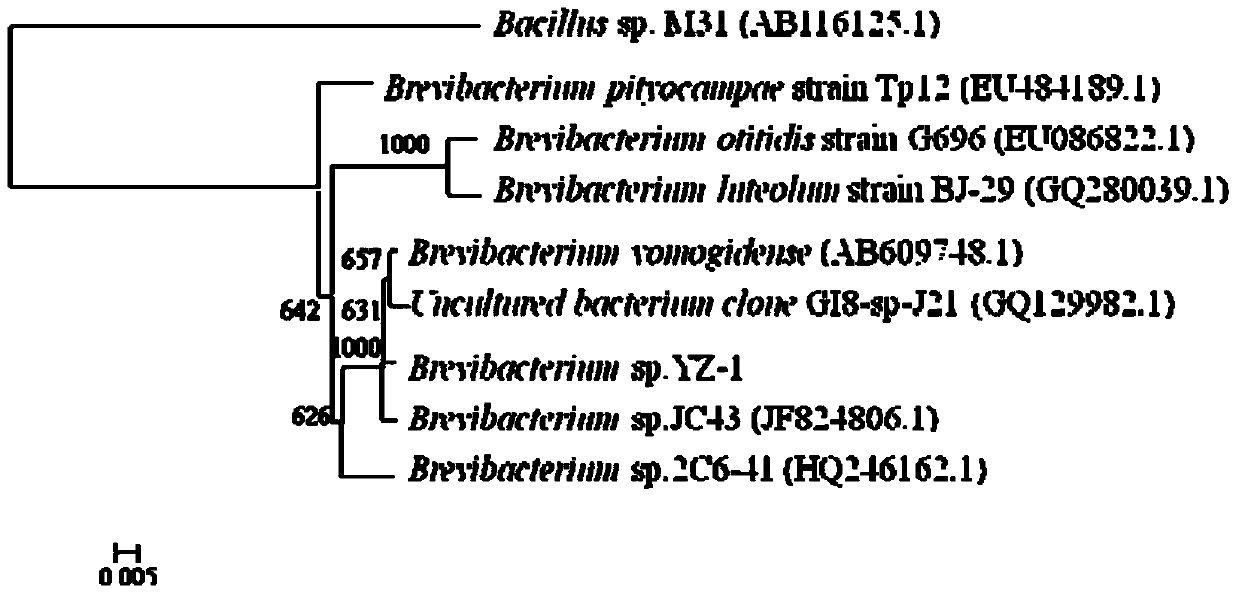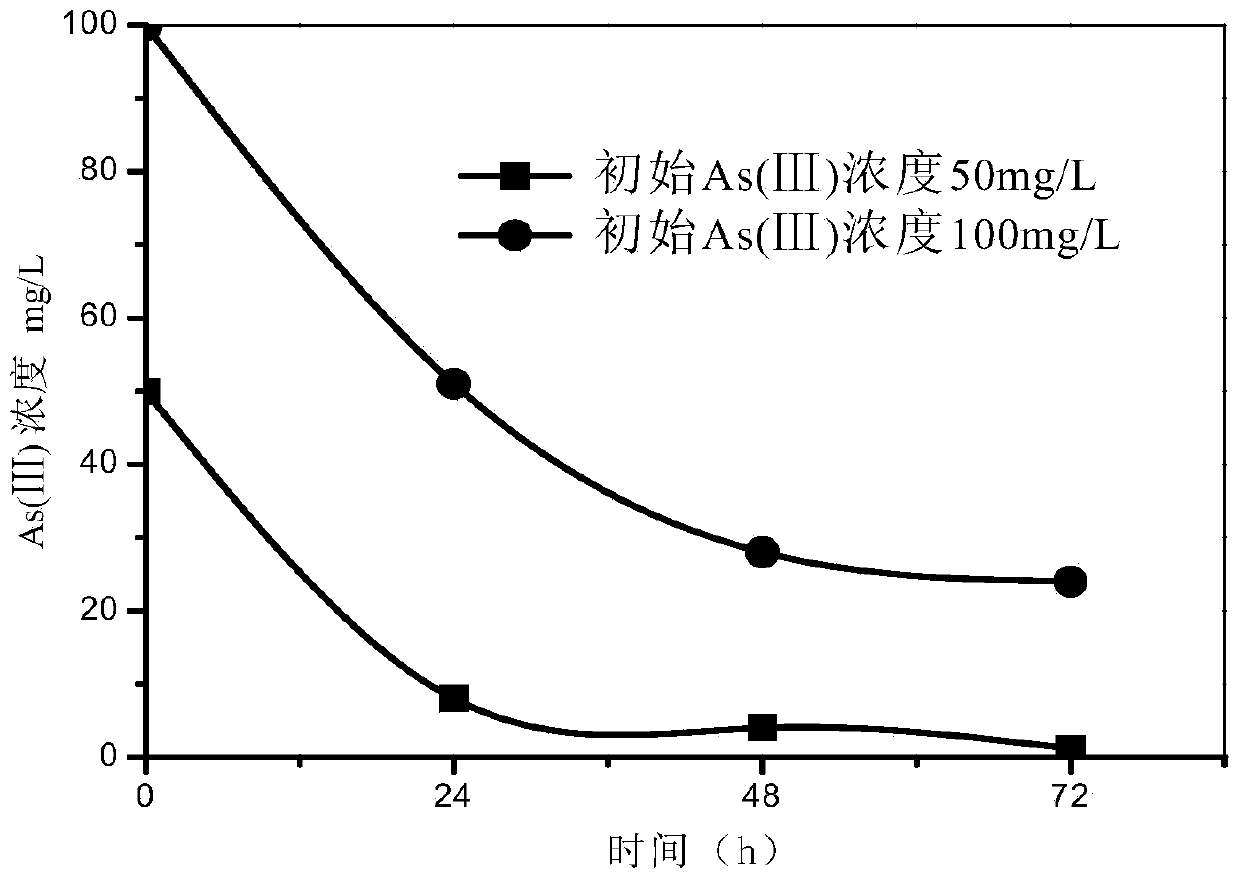Bacterial strain used for arsenic polluted soil remediation and application method thereof
A technology of soil remediation and application method, which is applied in the field of arsenic-contaminated soil microbial remediation to achieve the effect of increasing mobility and reducing the harm of arsenic
- Summary
- Abstract
- Description
- Claims
- Application Information
AI Technical Summary
Problems solved by technology
Method used
Image
Examples
Embodiment 1
[0028] Example 1: Isolation, purification and domestication of the strain of the invention
[0029] Collect arsenic-contaminated soil from the realgar mining area in Shimen County, Hunan Province. Take 5g of soil and culture in 50mL sterilized LB liquid medium for 2 days. Take 1mL of upper mud and dilute to 10 by gradient dilution method. -5 , 10 -6 , 10 -7 , Using a pipette from 10 -6 , 10 -7 0.1 mL of the diluted solution was coated with a solid medium containing 100 mg / L As(III) and incubated at 30°C for 3 to 4 days. The solid medium composition is: 15g / L LB medium, 2g / L sodium lactate, 2g / L potassium dihydrogen phosphate, 2g / L magnesium sulfate and 15g / L agar, pH=7-8. Use a sterile inoculating needle to pick up colonies of different morphologies, and streak them into 100mg / L As(III) solid medium and cultivate them at 30°C for 3 days. Separate and purify continuously for more than 3 times to obtain single colonies of different forms.
[0030] Use 2mL1% AgNO 3 The solution sprea...
Embodiment 2
[0031] Example 2: Biological identification and morphological characteristics of the strain of the present invention
[0032] The bacterial genomic DNA extraction kit was used to extract the genomic DNA of the strain, and then the 16S rRNA gene was amplified and sequenced using the 16S rRNA gene universal primer.
[0033] A phylogenetic tree was constructed using the 16S rRNA gene sequence. The strain was clustered with Brevibacterium yomogidense, and the similarity reached 99%, and the similarity with Brevibacterium sp.JC4316S rRNA gene reached 100%, named Brevibacterium sp.YZ-1. The phylogenetic analysis tree of this strain is as figure 1 Shown.
[0034] The bacterial body of this strain is rod-shaped and belongs to Brevibacterium. Scanning electron micrograph of this strain, see figure 2 .
Embodiment 3
[0035] Example 3: The oxidation efficiency and tolerance of the strain of the present invention to As(III)
[0036] Use an inoculating loop to pick up the purified colonies and culture them in 100 mL sterilized liquid medium with shaking for 24 hours. Then, 5 mL of the bacterial solution was inoculated into 50 mL sterile medium with As(III) concentrations of 50 mg / L and 100 mg / L, respectively, and cultured with shaking at 30°C for 72 hours. During this period, the residual As(III) content was measured at 24, 36 and 72h respectively. The As(III) solution with a concentration of 100mg / L was oxidized by more than 75%, and the As(III) solution with a concentration of 50mg / L was almost completely oxidized. Such as image 3 Shown.
[0037] Inoculate with the same amount of As(III) 200mg / L, 400mg / L, 600mg / L, 800mg / L, 1000mg / L, 1200mg / L, 1500mg / L liquid medium with shaking culture at 30℃ for 24h. Ultraviolet visible spectrophotometer measures the absorbance value OD600 at 600nm. The to...
PUM
| Property | Measurement | Unit |
|---|---|---|
| Tolerance | aaaaa | aaaaa |
Abstract
Description
Claims
Application Information
 Login to View More
Login to View More - R&D
- Intellectual Property
- Life Sciences
- Materials
- Tech Scout
- Unparalleled Data Quality
- Higher Quality Content
- 60% Fewer Hallucinations
Browse by: Latest US Patents, China's latest patents, Technical Efficacy Thesaurus, Application Domain, Technology Topic, Popular Technical Reports.
© 2025 PatSnap. All rights reserved.Legal|Privacy policy|Modern Slavery Act Transparency Statement|Sitemap|About US| Contact US: help@patsnap.com



